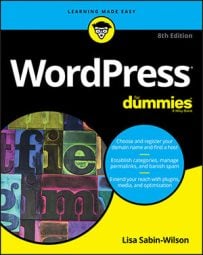Determining whether to use the Multisite feature depends on user access and publishing activity. Each site on the network shares a codebase and users but is a self-contained unit. Users still have to access the back end of each site to manage options or post to that site. A limited number of general options are available networkwide, and posting isn’t one of those options.
You can use multiple sites on a network to give the appearance that only one site exists. Put the same theme on each site, and the visitor doesn’t realize that the sites are separate. This technique is a good way to separate sections of a magazine site, using editors for complete sections (sites) but not letting them access other parts of the network or the back ends of other sites.Another factor to consider is how comfortable you are with editing files directly on the server. Setting up the network involves accessing the server directly, and ongoing maintenance and support for your users often leads to the network owner’s doing the necessary maintenance, which is not for the faint of heart.
Generally, you should use a network of sites in the following cases:
- You want multiple sites and one installation. You’re a blogger or site owner who wants to maintain another site, possibly with a subdomain or a separate domain, with both sites on one web host. You’re comfortable with editing files; you want to work with one codebase to make site maintenance easier; and most of your plugins and themes are accessible to all the sites. You can have one login across the sites and manage each site individually.
- You want to host blogs or sites for others. This process is a little more involved. You want to set up a network in which users sign up for their own sites or blogs below (or on) your main site and you maintain the technical aspects.
Finding and using error logs and doing general debugging are necessary skills for managing your own network. Even if your web host sets up the ongoing daily or weekly tasks for you, managing a network can involve a steep learning curve.
When you enable the Multisite feature, the existing WordPress site becomes the main site in the installation.
Although WordPress can be quite powerful, in the following situations, managing multiple sites has limitations:- One web account is used for the installation. You can’t use multiple hosting accounts.
- You want to post to multiple blogs at the same time. WordPress doesn’t allow this practice by default.
- If you choose subdirectory sites, the main site regenerates permalinks with /blog/ in them to prevent collisions with subsites. Plugins are available that prevent this regeneration.
- Create an account
- Create a blog in their WordPress installations (on your domain)
- Create content by publishing blog posts
- Upload media files such as photos, audio, and video
- Invite friends to view their blogs or sign up for their own accounts

